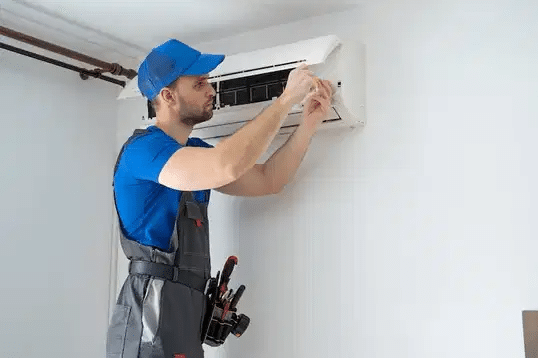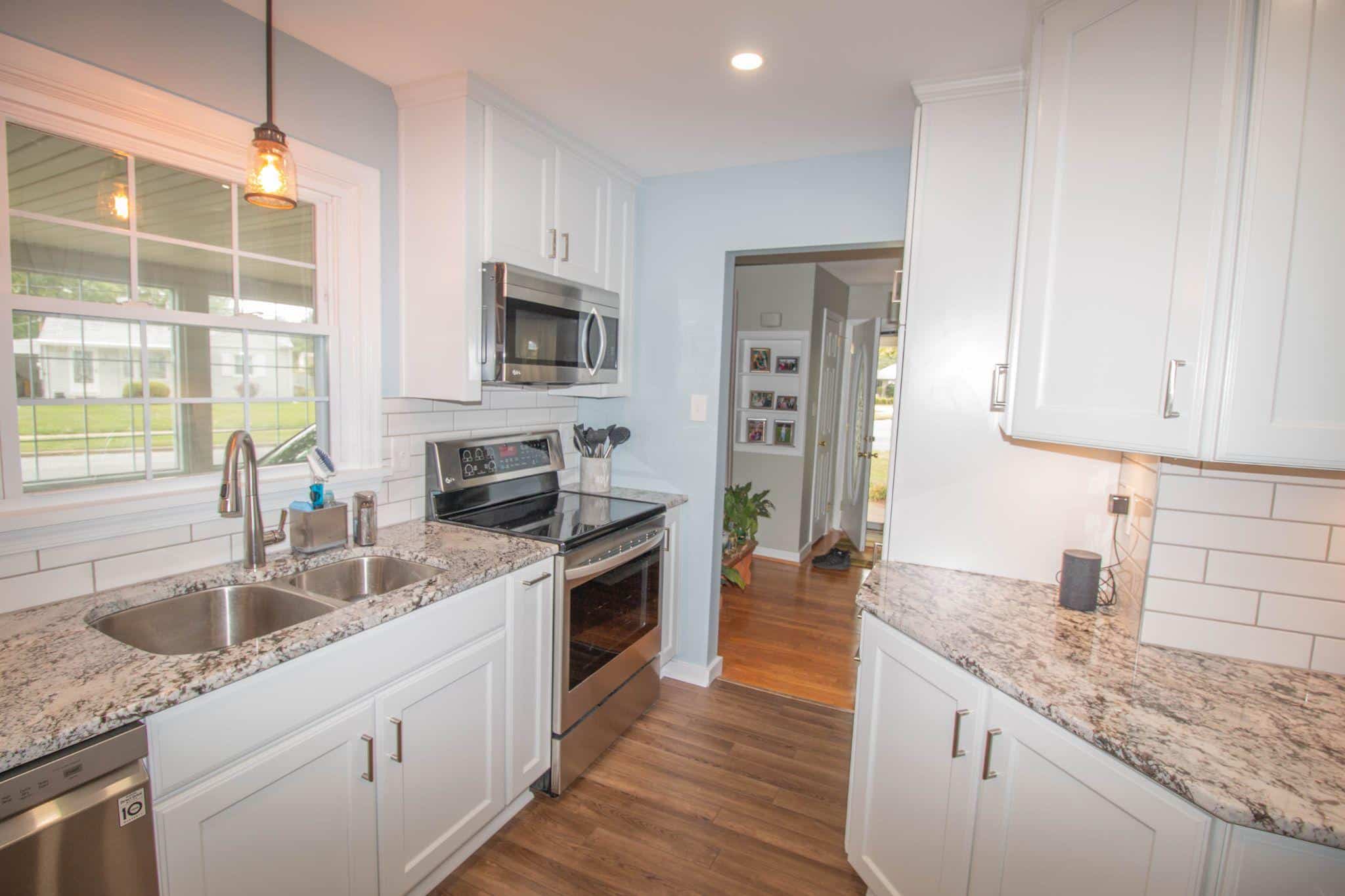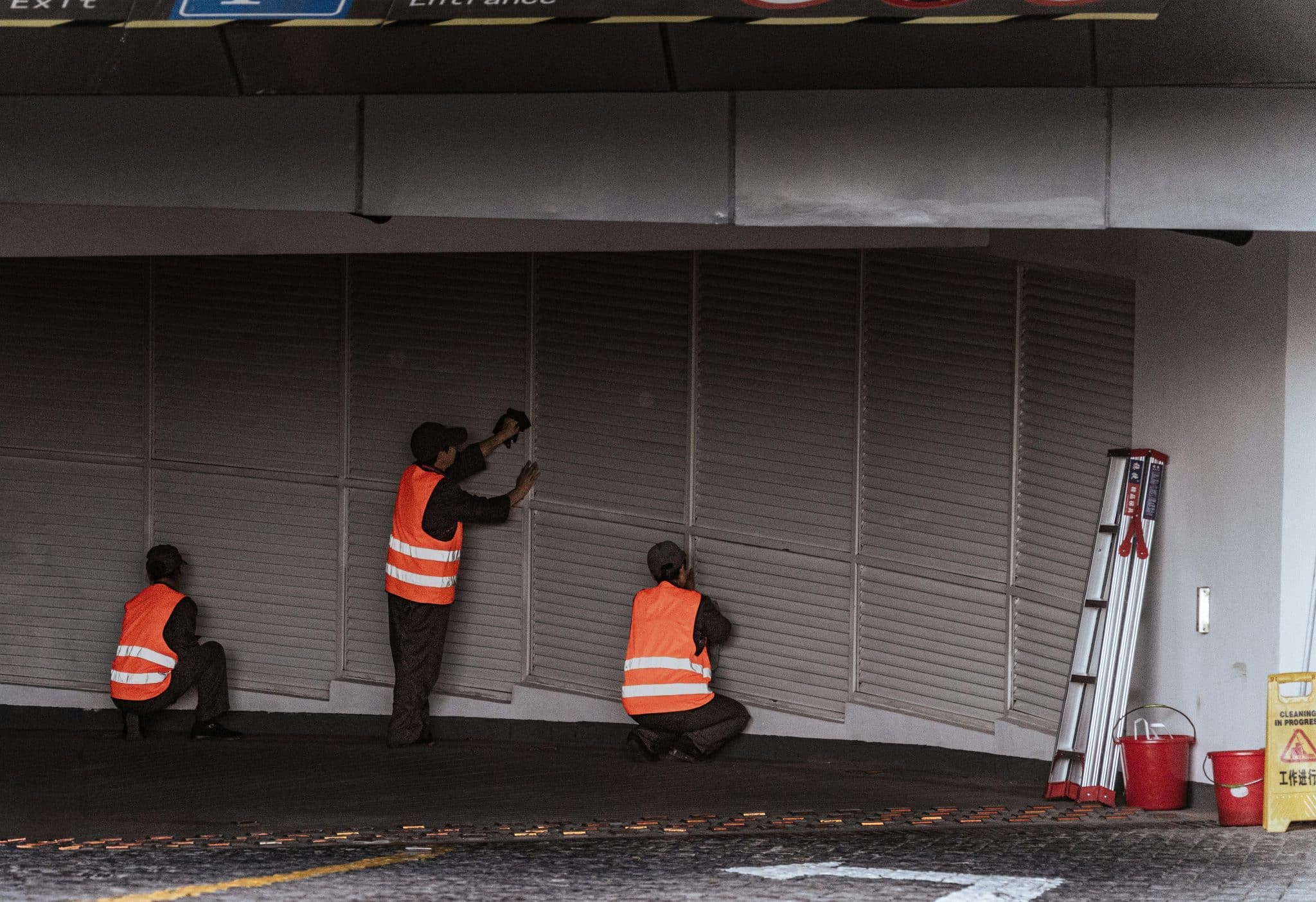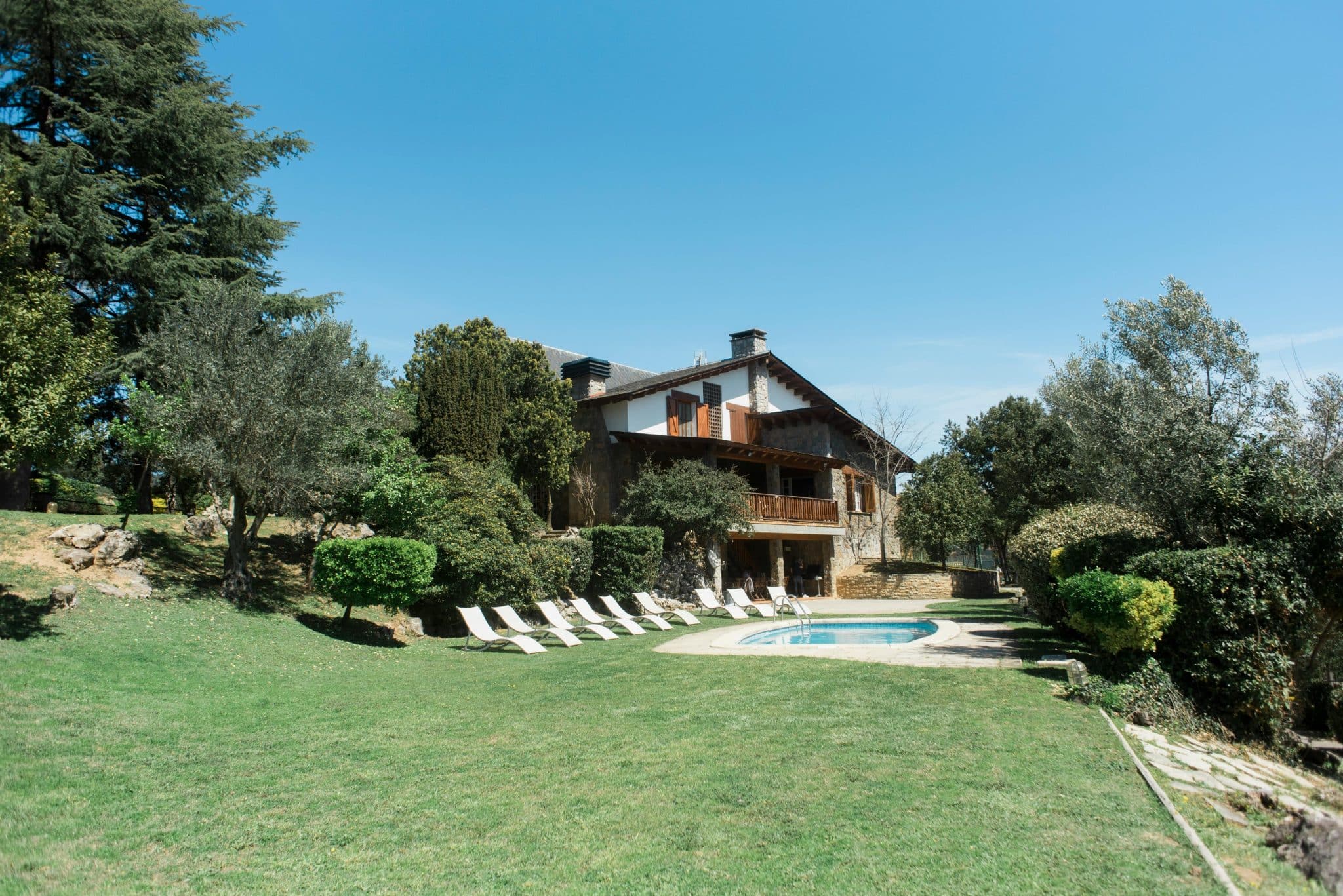Looking at those outdated granite countertops and wondering if there’s a budget-friendly way to refresh them?
You’re not alone. Thousands of homeowners face the same dilemma when their once-loved granite no longer fits their style.
The good news? Painting granite countertops is possible, costs a fraction of replacement, and can completely transform your kitchen’s look.
This guide will show you exactly which paints work on granite, the essential prep steps for lasting results, and realistic expectations for your painted surfaces.
We’ll cover everything from surface preparation techniques to maintenance tips, helping you decide if painting is right for your kitchen renovation goals.
Why Does Granite Work Best as a Countertop?
Granite countertops are made from natural igneous rock formed deep within the Earth through intense heat and pressure, creating a dense stone surface primarily composed of quartz, feldspar, and mica crystals.
This natural formation gives granite its signature speckled appearance and makes it one of the most durable materials available for kitchen surfaces, with excellent resistance to scratches, heat, and stains when properly sealed.
Key Characteristics that Make Granite Popular:
- Durability – Resists scratches, heat damage, and daily wear better than most countertop materials
- Natural Beauty – Offers unique patterns and colors that add visual appeal to any kitchen
- Home Value – Increases property value and appeals to potential buyers when selling your home
Granite’s natural beauty, with unique patterns and colors, enhances home value and durability, making it popular for style and function.
However, homeowners often consider painting their granite countertops if the color or pattern no longer suits their taste, if the surface shows wear or damage, or when they want a kitchen update without the cost and hassle of replacement.
Can You Paint Granite Countertops?
The short answer is yes, but success depends on several key factors that influence whether painting is suitable for your specific circumstances.
1. The Reality of Painted Granite

Painting granite countertops is technically possible and can yield good results when done properly with the right preparation and materials.
However, success largely depends on your specific granite type, its current condition, and your willingness to follow detailed preparation steps. The painted surface will never match the original durability of natural granite.
- Paint sticks better to rougher granite textures than to polished surfaces.
- Results vary significantly depending on granite color and pattern complexity.
- Using professional-grade materials and techniques is essential for achieving lasting results.
Remember: Painted granite is a cosmetic fix, not a permanent solution like replacing countertops.
2. The Smooth Surface Problem

Granite’s naturally smooth and non-porous surface makes it hard for paint to bond properly without extensive prep work.
The polished finish that makes granite attractive also poses the biggest obstacle to paint adhesion. Most granite surfaces require aggressive sanding or chemical etching to create enough texture for paint to grip.
- Polished granite needs thorough sanding with coarse-grit sandpaper before painting.
- Some granite types contain natural oils that can hinder proper paint adhesion.
- Poor surface prep causes peeling and chipping in just a few months.
Remember: Skip the prep work, and your paint job will fail quickly.
3. The Longevity Reality Check

Even with perfect preparation and high-quality paint, painted granite countertops won’t endure heavy kitchen use like the original stone surface.
Everyday activities such as cutting, hot pots, and cleaning can wear down the paint finish over time. Most painted granite surfaces require touch-ups or full repainting every 2-3 years with normal use.
- Painted surfaces are more prone to scratches from knives and utensils.
- Heat from pots and pans can cause paint to bubble or discolor.
- Acidic substances such as lemon juice can damage paint layers.
remember: view painting as A short-term fix rather than A permanent kitchen upgrade.
4. The Dangers of Surface Preparation

The preparation process often involves harsh chemicals or aggressive sanding that can permanently damage your granite if done improperly.
Some granite types react poorly to certain primers or etching solutions, causing permanent discoloration or surface damage. Once etched or damaged, the granite cannot be restored to its original condition.
- acid-based etching solutions can cause permanent white spots on dark granite.
- Over-sanding can remove the granite’s protective seal and cause staining.
- Chemical reactions between certain primers and granite minerals can cause discoloration.
remember: test all products on A hidden area first to avoid irreversible damage.
5. Not All Paints Work the Same

Not all paints are suitable for granite surfaces, and selecting the wrong type guarantees failure. Epoxy-based paints offer the best durability and adhesion for granite, while chalk paint is easier to apply but less durable. Standard wall paints will quickly fail on granite due to poor adhesion and low durability.
- Epoxy-based paints offer the strongest bond and most durable finish for high-traffic areas.
- Chalk paint needs less prep but requires frequent touch-ups in busy kitchens.
- Specialty countertop painting kits often include primers that are specifically designed for stone surfaces.
remember: invest in quality paint designed for countertops rather than using standard wall paint.
Pros and Cons of Painting Granite Countertops
This comparison to help you make an informed decision about painting your granite countertops:
| Pros | Cons |
|---|---|
| Cost-Effective Solution- save thousands compared to full replacement – painting costs $200-500 vs $3000-8000+ for new granite. | Time-Intensive Process- requires 3-5 days, including prep, priming, painting, and curing time with multiple coats. |
| Quick Style Update – change outdated colors or patterns in a weekend project without major renovation disruption. | Poor Long-Term Adhesion- paint may chip, peel, or wear off within 1-3 years, especially around high-use areas like sinks. |
| Unlimited Color Options- Choose from hundreds of colors and finishes, including marble looks, solid colors, or custom designs. | Loss of Natural Beauty- covers the unique natural patterns and texture that make granite valuable and attractive. |
| DIY-Friendly Project- Homeowners can complete the project themselves with basic tools and painting experience. | High Maintenance Requirements- Needs regular touch-ups, careful cleaning, and potential repainting every 2-3 years. |
| Temporary home value boost- A refreshed appearance can improve the kitchen’s looks for selling or personal enjoyment. | Potential permanent damage- Aggressive prep work can permanently etch or damage granite, reducing resale value. |
| Fast results – See immediate change once the project is complete, unlike waiting weeks for A new countertop installation. | Reduced kitchen functionality- Painted surface is less heat-resistant and scratch-resistant than The original granite. |
Bottom line: painting granite works best as A short-term, budget solution for homeowners planning to replace countertops within 3-5 years or those wanting a temporary style change.
Conclusion
Painting granite countertops can give your kitchen a fresh new look without the high cost of replacement. While it’s possible to achieve good results with proper preparation and quality materials, remember that this is a temporary solution that requires ongoing maintenance.
The key to success lies in setting realistic expectations and thorough preparation. If you’re looking for a budget-friendly way to update your kitchen for a few years, painting granite can be worth the effort.
However, if you’re looking for a long-term solution, investing in new countertops may be a better choice. Before starting your project, carefully weigh the pros and cons we’ve discussed. Consider your budget, timeline, and how long you plan to keep your current kitchen setup.
Ready to give your granite countertops a makeover? Start with a small test area first to ensure you’re happy with the results.








